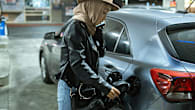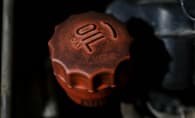There are few more frustrating feelings than coming out in the morning to find the battery in your car has gone flat.
If you’re prepared to wait you could call your auto club or roadside assistance service, but it can be an hour or more before the serviceperson arrives on a cold winter’s morning when demand is at its highest.
Instead of waiting you could jump-start your car and get on with your day without further delay. Jump starting a car is not that hard. In this guide we’ll explain how to jump start a car with cables, without cables, and other things to be aware of.
Locate the battery
Batteries most often let us down on a cold, miserable morning in the middle of winter, not the conditions for learning about jump-starting your car.
Before you find yourself in that situation, pick up the owner’s manual and find out whether it is actually possible to jump-start your car. The battery is located in the engine bay on most cars, but there are a number that have it located in other parts of the car, such as the boot.
A car that’s got the battery in the boot will have a positive terminal in the engine bay for the specific purpose of jumping a car battery. Again, check the owner’s manual to help locate it.
Inspect the battery
Before attempting to jump-start a car with a flat battery, check it for damage, leakage or corrosion. Also check that the connections are clean and firmly attached. If you find anything, it’s best not to attempt to jump-start the car, instead call for help. Safety first.
What do I need?
The best way to revive a flat battery is to charge it using a car battery jump starter, but that takes time, something we rarely have when we’re in a rush to get to work. The alternative is to jump-start your car, and that can be done using a power pack, which is designed specifically for that purpose, or jumper leads/jumper cables using another car.
Power packs can be bought from most automotive accessory stores and can be carried in your car to get you out of trouble whenever or wherever it strikes. They don’t need another car or mains power to work, but you do need to keep them charged so they’re ready to go when you need them.
If you don’t want to go to the expense of buying a power pack a set of quality jump leads will do the job nicely. The downside is that to use them you need another car to provide the jump start.
.jpg)
Using jumper leads
How to jump start a car with leads? Park the cars close enough together so the jumper leads reach from the donor vehicle to the flat one, but they should not be touching. Make sure both cars are in neutral or park, with the ignition off, and the handbrake applied.
Connect the red clamp of the jumper leads (positive) to the positive (red) terminal on the donor battery, then connect the clamp on the other end of the (red) lead to the positive (red) terminal of the flat battery. If the flat battery is not located in the engine bay connect the other end of the lead (red) to the positive post provided in the engine bay for that purpose.
Next, connect the black clamp of the jumper leads (negative) to the negative terminal on the donor battery, and connect the other end of the (black) lead to a metal earthing point, such as a bolt or a bracket in the engine bay. Do not connect it to the negative (black) terminal on the flat battery. If in doubt, refer back to your car’s owner’s manual. Check that the leads are not going to get tangled up with any parts that might be moving once the engine starts.
Start the donor car first and let it idle for a short period to stabilise before attempting to start the car with the flat battery. To avoid possible damage to the car with the flat battery from voltage spikes that can occur when jump-starting it, switch the headlights on on the car with the flat battery. The drain of the lights will help dampen any spikes that could occur.
After waiting a short period, attempt to start the car with the flat battery. If it starts, leave it running for a few minutes to begin charging the battery. If it doesn’t start, wait a moment or two and try again. If the jumper leads get hot do not try to start the engine, turn the ignition off and check that the leads are correctly connected before proceeding any further.
Once the engine is running on the car with the flat battery, remove the jumper leads in the reverse order that you connected them, making sure they don't touch each other or any metal surfaces. The car should then be driven for at least 30 minutes to charge the battery to a useable level.
.jpg)
Jump starting without cables
Once upon a time manual cars could be 'push-started' by having someone push the car to a slow roll and then releasing the clutch with the ignition on to restart the engine. For modern cars and all automatics, this trick won’t work.
Instead, the only way to start a car with a dead 12-volt battery without jumper leads is to use a power pack or replace the battery altogether.
How to jump start a car by yourself
If you don’t have a power pack, you’ll need to source a second vehicle to jump start a car, but if you follow the proper procedure you don’t need a second person.
What if it won't start?
If the car won’t start even with a power pack or a battery from a connecting donor car, there is some other problem and you should seek expert assistance.
.jpg)
What if my battery goes flat again?
If the battery goes flat again, or regularly goes flat, there could be a problem with your car's charging system (usually, the alternator) or the battery could be beyond recharging and probably needs replacing. Batteries are consumable items after all. To check the condition of your battery, go to a battery retailer who will happily do it for you.
Can you jump start an EV?
Most electric vehicles have a 12-volt battery separate from their high-voltage battery packs. Just like in a combustion car, these batteries are required to run some basic functions of the vehicle when the high-voltage system is powered down, and also to run some systems which are reliant on 12-volt electronics.
It is possible for these batteries to run dead - just like in a combustion car, and often this will mean that even your electric car might need jump-starting.
Generally, these 12-volt batteries work in a similar fashion to the ones in combustion cars, and can be safely jump-started from another car using the method above, but we’d strongly suggest checking the owner’s manual or manufacturer recommendations to ensure jump-starting your EV won’t run the risk of damaging something or voiding the warranty.
Some EVs, like Hyundai and Kia models are even capable of jump-starting themselves if there is sufficient charge in the high-voltage battery unit, via the use of the “12v battery reset” button.
.jpg)
Can you jump start a combustion car with an EV?
In short: Probably not. The 12-volt batteries in many EVs are not designed to provide the same ‘cranking amps’ as regular car batteries, and attempting to jump start a combustion car with an EV’s 12-volt unit could risk damaging some systems or upsetting software in the electric car. Again, we strongly recommend checking the manufacturer’s recommendations in the owner’s manual for appropriate use of an electric car’s 12-volt system. Ignoring this advice may void your warranty.
However, some EVs have a vehicle-to-load power dispensing system which, with the correct adapter, could provide you with a household power outlet from which to charge a power pack, for example.





.jpg)
.jpg)



.jpg)
.jpg)

.jpg)

.jpg)
.jpg)
.jpg)
.jpg)
.jpg)
.jpg)
.jpg)
.jpg)
.jpg)
.jpg)
.jpg)
.jpg)
.jpg)
.jpg)

.jpg)



.jpg)




